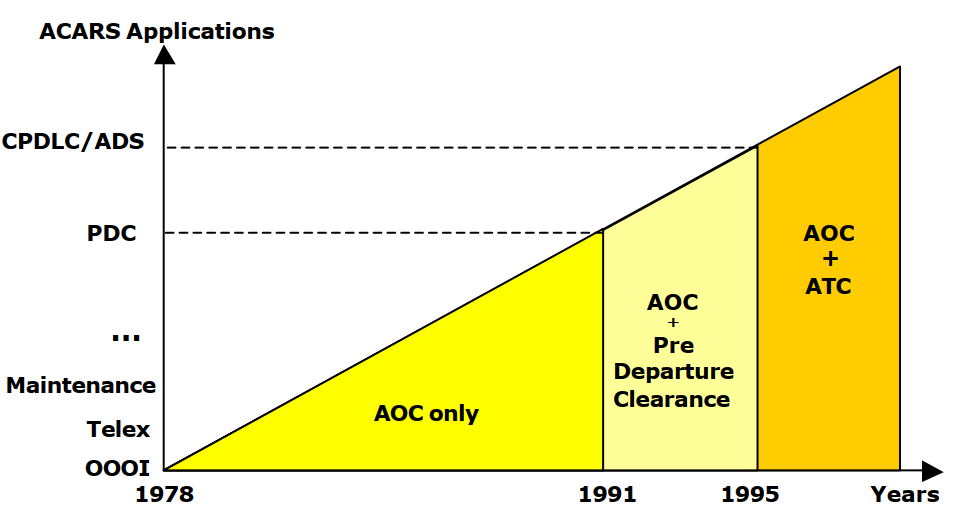ACARS history


As early as 1978, airlines realized the potential of datalink by introducing the Aircraft Communications Addressing and Reporting System (ACARS) addressable application, to exchange company messages between their Aircraft and their respective home bases.
ACARS was originally developed in response to a requirement from Piedmont Airlines to find a better way to measure flight crew duty times. The initial application was called “OOOI” and it offered aeronautical operational control (AOC) communications. OOOI gave actual times Out (of the gate), Off (the wheels weight on take-off), On (weight back on the wheels) and In (arrival at gate). As the system matured, organizations found that other time-sensitive information could be transmitted and received through the ACARS system, and the expansion was underway.
Maintenance services also found an important asset in the downlink of real-time aircraft parameters.
Thus, the original message service system has evolved over the past two decades to the generic Aircraft Communications And Reporting System or ACARS.
Today, over 6,000 aircraft are using ACARS worldwide on a daily basis, with more than 20 million messages exchanged per month.
ATC units began using the ACARS addressable application for Pre-Departure Clearance (PDC) at US airports in 1991 to alleviate the problem of frequency congestion. To obtain early benefits from CNS/ATM and in response to requests from operators using aircraft flying over the South Pacific, the “FANS-A package”, which uses the ACARS air/ground data communications network to support both AOC and ATS datalink applications, including ADS, CPDLC and AFN was standardized and developed by industry and approved for ATS in 1995 on a regional basis.
FANS-A has not followed the normal ICAO standardization process, since it was developed to support ATS by taking advantage of the existing ACARS technology.
In addition, ACARS, which was designed to facilitate AOC, has inherent limitations, which impair datalink network growth development, and the implementation of CNS/ATM. These include protocol limitations, constraining access to proprietary networks, frequency allocation management, and insufficient performance to support future datalink applications. Therefore, an ICAO SARPs (Standards And Recommended Practices) compliant network, called ATN, has been defined to enable full performance of datalink. Aside, the TCP/IP protocol which is widely used for ground/ground communication, is a candidate for wideband datalink (Gatelink,…).
These new datalink technologies will make possible to transport, with a better integrity, much larger amounts of data than is possible today. Furthermore, in combination with satellite-based navigation will also make it possible to revolutionize the way the international Air Traffic System and AOC operate and greatly enhance its capacity.
(Source: AIB Publications)
